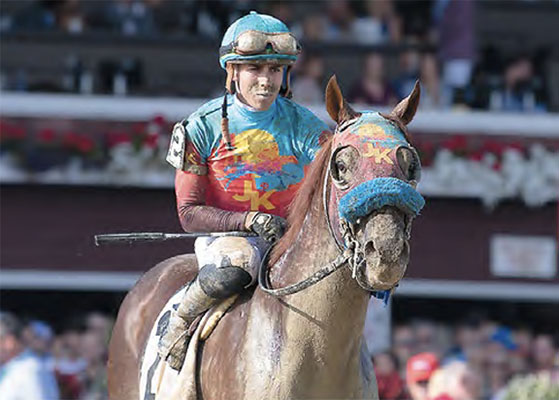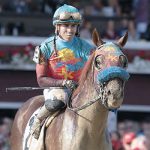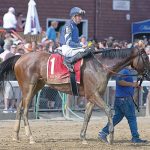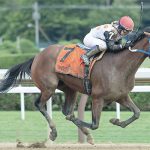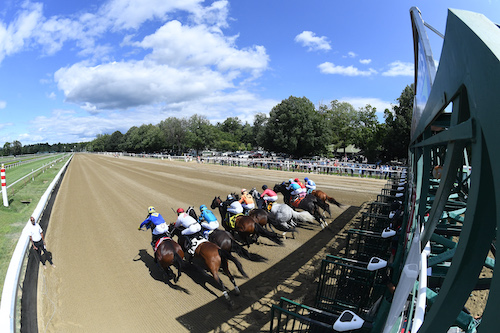
By Alec DiConza
It is finally that time of year. Each summer, Saratoga Race Course is viewed as a sort of heaven for horseplayers, a 40-day extravaganza filled with exciting opportunities to make money. This meet will be no different, with a plenitude of horses to bet on in each race this opening week. It has been said, however, that Saratoga can be one of the most difficult racing venues at which to win. To stay ahead at Saratoga is a challenge, one that only the most skilled handicappers are consistently able to accomplish.
The following angles for the upcoming season may just make it easier.
Bet dependable yet valuable trainers
Throughout the summer, attendees will hear the names Brown, Pletcher, Asmussen and Maker over and over again. There is value to be made in the connections that fly under the radar yet win at a high percentage.
As the Belmont Park spring meeting just finished up, Ray Handal ended up with the highest winning percentage (29 percent) for a trainer with 10 or more starts.
Linda Rice came out on top of the trainer standings at Belmont. Rice not only has decently priced horses ready to win, but she also hits the board quite often. While she had a 17 percent win rate at Saratoga last year, her on the board percentage was 54 percent. This means she got a lot of seconds and thirds, signifying her consistency. She could be used in exactas and trifectas with confidence.
Phil Bauer came to Saratoga with a small yet mighty stable last year. He won with six out of his 13 starts, a more than impressive 46 percent. Phil Serpe had a similar situation, winning six of 16 including the 14-1 winner of the Grade 1 Spinaway Stakes in Leave No Trace. Another trainer to watch is George Weaver, who is seven for his last 25 (28 percent) and recently became the third American trainer to win at Royal Ascot with Crimson Advocate.
Be wary of horses who used the speed bias at Ellis Park
If one paid close attention to racing at Ellis Park this spring and summer (where racing started earlier when Churchill Downs moved its meet there), you would have noticed a massive speed bias. Of the dirt races, 77 out of 114 (67.5 percent) were won by horses positioned in the top two at every call.
Additionally, gate-to-wire wins accounted for 46 out of 114 (40.4 percent) of the dirt victories.
These are hefty increases from the numbers at Ellis Park last summer.
In 2022, only 57 out of 117 (48.7 percent) dirt races were awarded to horses always in first or second. Just 34 out of 117 (29.1 percent) were won wire-to-wire. Frontrunners at Ellis entered the winners’ circle at a much higher rate this year than last. This is not the only piece of evidence that the track favored speed, however.
On average, horses who won from the front end at “The Pea Patch” gained 12.3 points on the Equibase Speed Figure scale from their last race, as of July 2.
While some have different methods of converting speed figures to lengths, this could be estimated as a 6-length increase on average.
Essentially, these winners ran a race at a certain track, came to Ellis and improved their form 6 lengths. With such a large gain, one can reasonably assume that these advancements are mostly due to the track’s nature as opposed to natural improvement. Ultimately, be cautious of horses who used Ellis Park to their advantage.
Those horses could be heavily overbet at a difficult racetrack like Saratoga, while money could be made betting a horse whose true form is better at a larger price. Also, upgrade horses that ran winning races at Ellis by making up ground. They ran better races than their figures and the visuals suggest, going against the flow of the track. So, before betting a horse like Society after her track record-setting performance in the Grade 3 Chicago Stakes, think about where she was positioned throughout the race.
Make workouts the top priority in 2-year-old races
One of the most exciting aspects of the Saratoga meet is its abundance of 2-year-old racing.
While looking at a maiden special weight filled with first-time starters can make one’s head spin, there is a way to get a sense of how talented the horses are.
Watching workouts is extremely beneficial in assessing a first-time starter. Given the horse has never raced before, a workout can portray how ready the horse is for competition. There are a couple of key notes one should take whenever they look at a first-time starter’s workout.
One angle is how fast the time is for the distance, and where that horse finished relative to others who worked at the same track, distance and on the same day.
Additionally, one can look up the work on XBTV to see how the horse looked during the drill.
Another angle one can look for is how often a horse has had a gate drill, indicated by a letter “g.” If a horse enters a race off of just one gate work, that can signal that the horse was very professional in the move and is ready to race. Conversely, if a horse has a few gate drills in a row, this could mean the horse has needed extra practice with the gate, and therefore may not be as sharp breaking from the stalls.
A final important note on works is their spacing. If a horse has a consistent, regularly spaced out work pattern (usually a little over or under seven days apart on average), they have had a good fitness routine that will set them up well for the race. If a horse has a more inconsistent work pattern, like random several-week breaks here and there, that shows that the horse could be unsound or unfit. When trying to make sense of these maiden special weight races, there is no doubt that looking at the workouts first can be very helpful.
Alec DiConza, a rising junior at Shenendehowa High School in Clifton Park, is a member of the editorial team this summer at The Saratoga Special.


